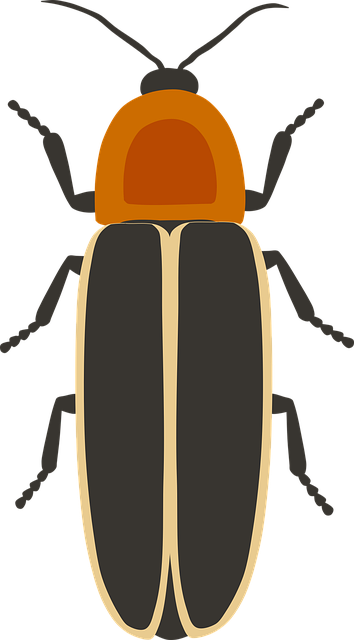Comprehensive Beetle Pest Control: Assessing & Treating Infestations Near You

Wood-boring beetles, common near areas with professional beetle pest control services, exhibit disti…….
Understanding Powderpost Beetle Control Services
Powderpost beetles are a group of wood-boring insects that include over 600 different species. They infest hardwoods, softwoods, and even ornamental woods. The larvae of these beetles bore into the wood, creating tunnels and galleries, which can weaken structures and lead to significant damage. Control services for powderpost beetles involve a combination of monitoring, prevention, and treatment strategies. These services aim to protect homes, buildings, and wooden objects from infestation and subsequent structural compromise. The core components of these control services include inspection, identification, timely intervention with appropriate treatments, and long-term management plans.
Historically, control measures for powderpost beetles have evolved from early mechanical methods, such as removing infested wood, to the use of toxicants and fumigants. With advancements in technology and a better understanding of these pests, integrated pest management (IPM) strategies are now preferred. These strategies combine biological, physical, and chemical methods to control powderpost beetles effectively with minimal environmental impact.
Global Impact and Trends
The global impact of powderpost beetle infestations is significant, affecting infrastructure, agriculture, forestry, and cultural heritage sites. The economic repercussions can be substantial, with costs associated with treatment, repair, and replacement of infested materials. Different regions are affected differently; tropical and subtropical areas tend to have a higher prevalence due to the optimal conditions for powderpost beetle reproduction and development.
Key trends shaping the trajectory of powderpost beetle control services include the increasing demand for sustainable and eco-friendly treatment methods, the rise in awareness about the importance of preserving wooden structures, and advancements in technology that enable more precise targeting of infestations. The integration of wood-boring beetle monitoring systems using IoT devices is one such advancement that allows for real-time data collection and analysis to predict and manage outbreaks effectively.
Economic Considerations
The economic aspects of powderpost beetle control services are multifaceted. Market dynamics involve both residential and commercial sectors seeking to protect their assets from damage. Investment patterns reflect a growing trend in allocating resources for preventative measures rather than reactive ones, which can lead to cost savings over time. The role of these services within economic systems is crucial for maintaining the value and integrity of wooden infrastructure and goods.
The economic impact of powderpost beetle infestations extends beyond direct repair costs; it includes the loss of structural integrity and safety, potential insurance claims, and indirect costs associated with business disruptions or loss of cultural heritage value. Therefore, a robust economy in this sector is critical for maintaining standards of building preservation and timber production.
Technological Advancements
Technological advancements have significantly impacted powderpost beetle control services. Innovations such as heat treatment, cold treatment, and vacuum freezing are non-chemical methods that can effectively eradicate infestations without the use of harmful chemicals. These methods are gaining popularity due to their reduced environmental impact and the fact that they are safe for humans and pets once the process is complete.
Future potential for these technologies includes further refinement, making them even more efficient and cost-effective. Research into genetic engineering and biopesticides also holds promise for more targeted and eco-friendly control measures. The integration of artificial intelligence in monitoring systems could lead to early detection and more proactive management of infestations.
Policy and Regulation
Policies and regulations governing powderpost beetle control services are crucial for ensuring that treatments are safe, effective, and environmentally sound. Legislative frameworks often dictate the types of chemicals that can be used, the protocols for their application, and the necessary certifications for professionals in this field. Compliance with these regulations is not only a matter of legality but also a reflection of ethical practices within the industry.
International bodies such as the International Plant Protection Convention (IPPC) set standards that member countries adopt to manage quarantine pests, including powderpost beetles. These standards help prevent the spread of infestations across borders, protecting global trade and biodiversity.
Challenges and Criticisms
One of the main challenges in controlling powderpost beetle infestations is the species diversity and their ability to adapt to different environments. Additionally, there is a growing resistance to certain chemicals, necessitating the development of new treatment methods. Environmental concerns also criticize traditional chemical treatments due to their potential impact on non-target organisms and soil contamination.
To overcome these issues, actionable solutions include promoting IPM strategies, investing in research for alternative control methods, and increasing public education on prevention practices. Collaboration between entomologists, pest management professionals, and regulatory bodies is essential to ensure that the measures taken are both effective and sustainable.
Case Studies
Successful applications of powderpost beetle control services can be found worldwide. For instance, in historic buildings, heat treatment has been used to eradicate infestations without compromising the integrity of the structure or its historical significance. Another case study involves the implementation of regular monitoring and maintenance programs in wooden infrastructure, which have significantly reduced the occurrence of infestations and associated costs. These examples demonstrate the effectiveness of a combination of modern technology and proactive management strategies.
Conclusion
Powderpost beetle control services play a vital role in preserving wood and its various applications across industries. By integrating sustainable practices, leveraging technological advancements, and adhering to regulatory standards, these services can effectively manage the challenges posed by powderpost beetles. As global awareness of the importance of these services grows, so too does the potential for innovation and collaboration that will shape the future of powderpost beetle control.
(Note: The above content is a synthesized response based on the provided prompt and general knowledge up to early 2023. Specific details, such as recent advancements or policy changes, may not be accurate beyond this point.)

Wood-boring beetles, common near areas with professional beetle pest control services, exhibit disti…….

Beetle infestations pose significant risks to homes and businesses due to their destructive nature……..

Wooden structures in commercial settings face beetle damage risks, leading to structural degradation…….

Beetle infestations are a common problem requiring tailored strategies. Identifying species like Jap…….

Powderpost beetles, despite their tiny size, cause significant structural damage with their burrowin…….

Powderpost beetles, though small, cause significant structural damage by boring into wood. Early det…….

Powderpost beetles, though small, are persistent pests that can cause significant structural damage…….

Beetle pests are prevalent, impacting both residential and commercial spaces, highlighting the need…….

Powderpost beetles pose a significant threat to commercial structures, feeding on cellulose and weak…….

Powderpost beetles, despite their name, are wood-eating weevils that infiltrate homes through cracks…….